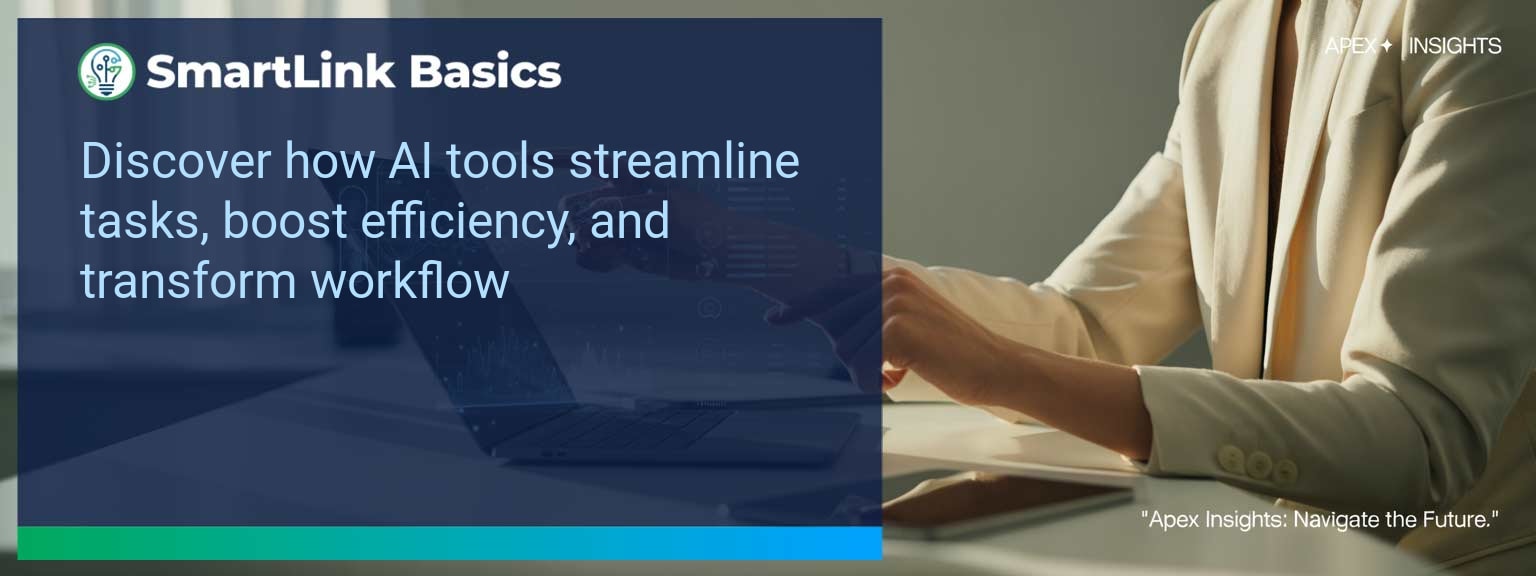Studies from McKinsey indicate that AI can automate up to 45% of work activities, presenting a significant opportunity for revenue-focused leaders to streamline operations. At SmartLink Basics, we see AI productivity tools as a practical lever to cut administrative drag, improve focus, and unlock higher-margin activities. For sales leaders, the right blend of AI tools for work and automation software can reshape deal cycles, improve forecasting accuracy, and free up more time for client engagement. This article outlines specific productivity challenges, how AI software for productivity addresses them, and the measurable gains leaders can expect. You will leave with a framework for selecting, implementing, and tracking the best AI tools to elevate workplace efficiency.
- Identify workflows where AI productivity tools can remove repetitive tasks.
- Match AI tools to high-impact sales activities for better ROI.
- Integrate automation software into your CRM and communication systems.
- Track metrics tied to efficiency, output quality, and customer responsiveness.
- Adopt a phased rollout to manage risk and maximize adoption.
Identifying Common Productivity Challenges In Modern Workplaces
Sales operations today are constrained by manual data entry, inconsistent follow-ups, and fragmented communication. High-value staff often waste hours reconciling reports or tracking activity across disconnected platforms. This friction decreases responsiveness and can erode client trust. One example is a sales coordinator spending two hours weekly merging spreadsheet data into a CRM dashboard. That time could be reallocated to prospect outreach if the process was automated. To act, leaders must map out repetitive tasks, evaluate their cost, and determine where artificial intelligence apps can insert automation without risking quality.Leveraging AI Productivity Tools To Address Productivity Issues
Deploying AI productivity tools targeted at sales workflows can accelerate key outcomes. For pipeline management, AI software for productivity can auto-update records, flag stalled deals, and trigger personalized reminders to reps without manual oversight. For time management, tools like intelligent scheduling assistants balance meeting loads to protect selling time. A regional sales manager, for instance, might use an AI-driven forecast review that consolidates rep inputs overnight, reducing a multi-hour meeting to a concise 15-minute decision session. The most sustainable approach blends workplace efficiency gains with rigorous testing to ensure adoption rates remain high.Measuring The Impact Of AI On Workplace Efficiency
Measurement should extend beyond time saved to include pipeline velocity, forecast accuracy, and customer engagement response times. Digital productivity solutions often fail when metrics focus solely on output volume. For example, an AI system that reduces email drafting time but results in lower-quality messaging creates downstream revenue risks. Leaders should deploy a balanced scorecard of efficiency, quality, and adoption metrics. Testing before scaling helps protect against overreliance on unproven automation software.| Category | Metric | Definition | Target |
|---|---|---|---|
| Leading | AI Task Automation Rate | % of repetitive tasks executed by AI tools | 70%+ |
| Lagging | Pipeline Velocity | Rate at which deals move stage-to-stage | +15% in 90 days |
| Quality | Client Satisfaction Score | Post-engagement customer survey rating | 8.5/10 or higher |
Future Trends And Innovations In AI For Productivity
The next wave of innovation will see AI tools for work that predict resource needs before they arise and proactively prevent revenue slowdowns. Autonomous meeting summarizers will integrate with CRM systems in real time. Adaptive dashboards will alert managers to capacity risks based on current bookings and historical patterns. Leaders who monitor emerging artificial intelligence apps and pilot them in controlled environments can protect competitive advantage. For deeper planning, explore the expert insights from SmartLink Basics on sustainable AI adoption. <Get the 90-day plan, coaching rubric, and dashboard template to operationalize AI in your enablement program.









